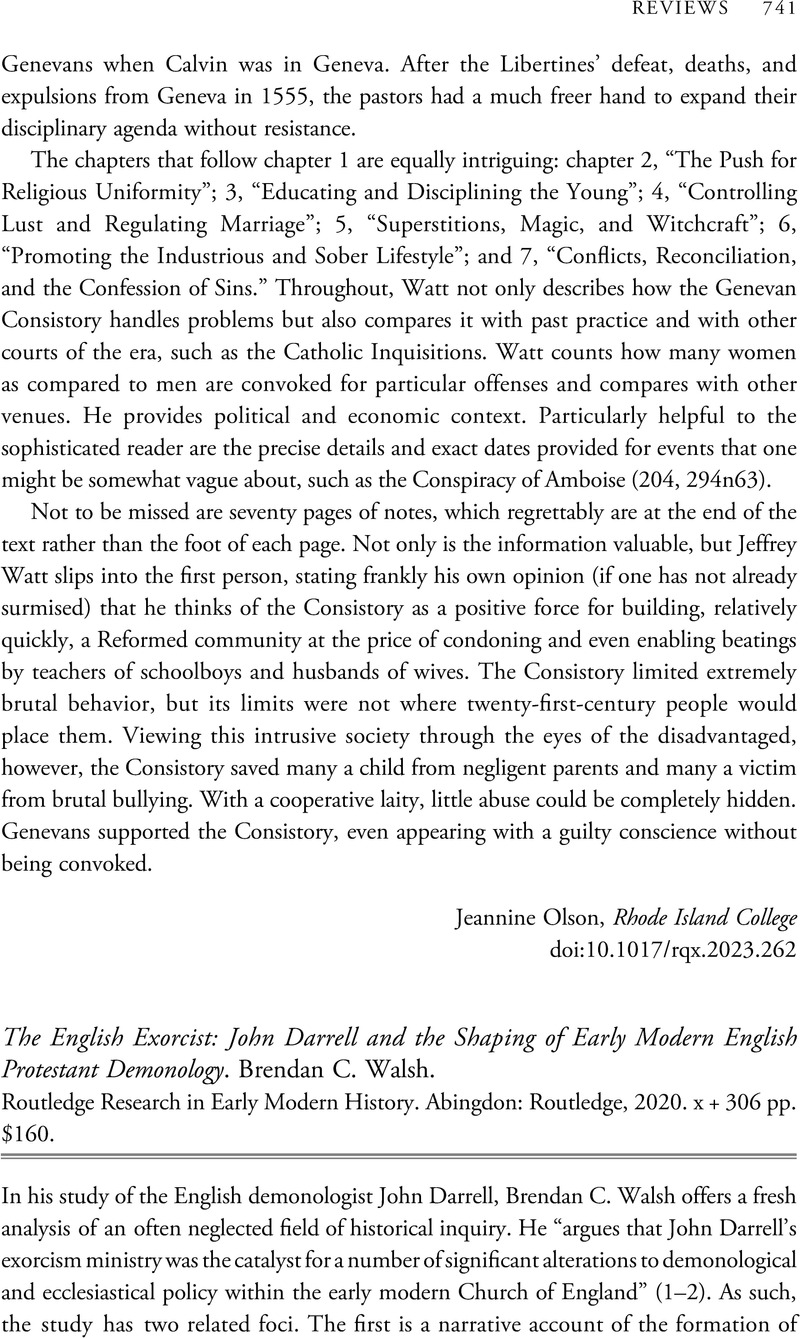No CrossRef data available.
Article contents
The English Exorcist: John Darrell and the Shaping of Early Modern English Protestant Demonology. Brendan C. Walsh. Routledge Research in Early Modern History. Abingdon: Routledge, 2020. x + 306 pp. $160.
Review products
The English Exorcist: John Darrell and the Shaping of Early Modern English Protestant Demonology. Brendan C. Walsh. Routledge Research in Early Modern History. Abingdon: Routledge, 2020. x + 306 pp. $160.
Published online by Cambridge University Press: 25 July 2023
Abstract
An abstract is not available for this content so a preview has been provided. Please use the Get access link above for information on how to access this content.

- Type
- Review
- Information
- Copyright
- Copyright © The Author(s), 2023. Published by the Renaissance Society of America



